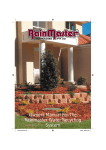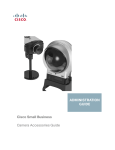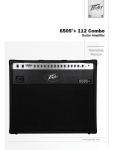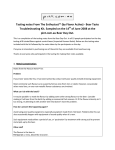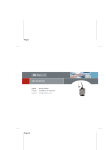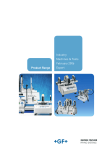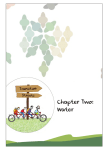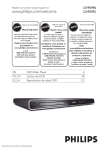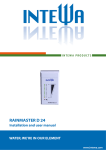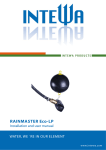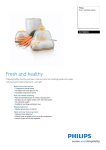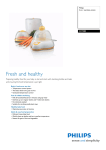Download Owners Manual for the Rainmaster Water Recycling System
Transcript
Owners Manual for the Rainmaster Water Recycling System 22874 Manual.indd 1 4/8/05 8:45:05 AM Rain Master Water Recycling System Welcome! Thank you for purchasing a Rainmaster Water Recycling System. Your Rainmaster system is fully automatic in operation and requires little owner intervention to ensure years of trouble free service. It is useful that the owner/operator of the system understands some of the broad concepts of the system operation. This manual has been written to provide a simple explanation and to serve as a future reference so that you can ensure that the system is working effectively at all times. Local Government and the NSW Department of Health regulates the design, installation and maintenance of water tanks to ensure that public health and the environment are protected at all times. ' 22874 Manual.indd 2 4/8/05 8:45:23 AM The Water Cycle The water cycle is the term used to describe the naturally occurring processes of rainfall, evaporation, absorption, storage and use of water in the environment. The cycle starts with cloud formation and when rain falls, it is collected on the ground and runs into existing bodies of water such as streams, lakes and rivers. Some of this water finds its way back into the environment through evaporation back into the atmosphere and some finds its way into the soil through percolation for use by plants and trees. The system is dynamic and constantly changing. Weather conditions such as humidity and temperature affect the amount of water drawn back into the air by evaporation or transpiration. The amount of rainfall (or lack of it) affects percolation of water into the soil in the proceeding days and months. Human use of water affects the water cycle in a variety of ways. Specifically water is drawn from its normal course of function within the water cycle and applied to domestic, agricultural and industrial uses. This diverted water, once used must be returned to the water cycle somewhere further down stream. The quality of water within a catchment has a significant impact on environmental and public health. Rainwater Tanks Rainwater tanks are considered an option in urban areas where providing water for our increasing population is becoming an important issue. Rainwater tanks can provide water for household use, both inside and outside, making a significant contribution to total water supplies. Many people regard rainwater as a healthy alternative to chlorinated mains water. Tanks offer several advantages: • they reduce demand on water storage • rainwater is free of chlorine • rainwater is soft water • they provide an emergency supply should there be a problem with the mains water supply • they reduce stormwater runoff. ( 22874 Manual.indd 3 4/8/05 8:45:26 AM How your system works: Your Rainmaster water recycling system has been designed to collect roof water in the tank and recycle the water through a pump and control unit into the dwelling. When an occupant of the home flushes a toilet or uses the washing machine the control unit automatically turns the pump on to supply water to the required fittings. As soon as the fittings are at the level of water required the control unit will turn the pump off automatically. If you run out of rainwater the low level float switch in the tank automatically adds town water to the tank. This guarantees that the homeowner will not run out of water during periods of low rainfall. The recycled water is generally connected to the toilets, washing machine and outside taps. (conditions will vary depending on the local council) Rainwater Quality Water quality is generally good if the tank is well-installed and maintained - gutters, roofs and downpipes also need maintenance. If the tank water is not clear, has a taste or an odour, steps should be taken to find the cause and fix the problem. If it is to be used for drinking, more care will be needed to ensure its high quality than if it is to be used for laundry or garden purposes. ) 22874 Manual.indd 4 4/8/05 8:45:35 AM Maintaining your Investment The Tank: Proper maintenance of the tank, roof and gutters is essential to ensure safe supply of water. Your roof and gutters should be inspected and cleared of leaves and other debris every three to four months (this should be increased if there are tall trees around the property). Tanks should be inspected every 2-3 years. If sludge is present in the tank it should be removed by completely emptying the tank (de-sludging). The manhole on the tank should be sealed after servicing. Professional tank cleaners are available in all areas. Plastic tanks will need some water or should be tied down to stop them from blowing over in strong winds when they are emptied. Leaf Diverters: Some builders install leaf diverters on the down pipes. This will allow leaves to fall on the ground rather than enter the rainwater system. Domestic Use Domestic water consumption varies widely ranging from 350 litres per person per day to1,500 litres per person per day. The average is about 635 litres which is enough to fill about 70 buckets. (A standard bucket will hold 9 litres - about 2 gallons). * 22874 Manual.indd 5 4/8/05 8:45:43 AM First Flush Devices: First flush devices prevent the first portion of roof run off from entering the tank and will reduce the amount of dust, bird droppings, leaves etc, that can accumulate on roofs from being washed into tanks. The device operates by filtering the first portion of roof water in a chamber that collects leaves and other contaminants. As this chamber fills up the clean roof water continues to flow into the tank. After the rainfall the water slowly trickles out of the chamber through a small hole at the bottom. Most first flush devices have access for cleaning the leaves and other debris. This should be done every three months. Unscrew cap to remove any debris every 3 months + 22874 Manual.indd 6 4/8/05 8:45:48 AM Quick Tips Every day, there are many simple little things we can do around the house to save water money and help the environment • Checking for leaks in taps, pipes and dishwasher hoses is an easy way to reduce on water wastage. Remember, one leaking tap can waste up to 2,000 litres of water a month. • Put the plug in the sink when washing your hands instead of holding them under running water. • Thaw frozen foods before you need them or use the microwave instead of placing them under running water. • Prevent taps from leaking by turning them off lightly and replace washers as soon as they begin to leak • Washing fruit and vegies in a half-filed sink instead of under running water is a great way to cut back on water wastage. • Rinsing your dishes in a plugged sink rather than under a running tap saves water and is just as easy and effective. • Installing one of the latest AAA Rated Shower heads can give you a great shower and save you around 10 litres of water a minute. They also save you energy costs as you’ll use less hot water. • To rinse your razor, run a little hot water into a plugged sink. Rinsing your razor under a running tap wastes lots of water. • There’s no need to leave the tap running while you brush your teeth. Simply wet your toothbrush before you begin and use a glass of water to rinse your mouth. , 22874 Manual.indd 7 4/8/05 8:45:51 AM Troubleshooting FAULT OBSERVED POSSIBLE CAUSE REMEDIAL ACTION • No water to flush the toilet • Pump Failure • Power failure • Water turned off to control unit • Call Rainmaster • Check Power Supply • Turn Water on • No water to • Pump Failure Washing Machine • Power failure • Water turned off to control unit • Call Rainmaster • Check Power Supply • Turn Water on • No water to Outside Taps • Pump Failure • Power failure • Water turned off to control unit • Call Rainmaster • Check Power Supply • Turn Water on • The Water from the tank is dirty • First flush device is dirty • Yard drains connected to the tank • Tank needs desludging • Leaves in gutters • Clean first flush device • Disconnect offending connections • Call Rainmaster for advice • Clean Gutters or call Rainmaster for advice This should be used as a guide only Call Rainmaster on the phone number below if you have any queries Customer Service 1 800 733 020 22874 Manual.indd 8 4/8/05 8:45:54 AM 04EE4AGL 8EG<9<64G8 I]ZGV^cBVhiZggV^clViZggZXnXa^c\hnhiZb XVgg^Zhi]Z[daadl^c\LVggVci^Zh# GV^clViZgIVc`/&*NZVgh >ciZgcVaEajbW^c\;^ii^c\h/*NZVgh :aZXig^XVa8dbedcZcih/')Bdci]h 8dcigdaJc^iEjbe/')Bdci]h EaZVhZgZ[ZgidndjgXdbea^VcXZXZgi^ÄXViZ [dglVggVcinVcYXdcY^i^dch# IZaZe]dcZ/&-%%,((%'%;VXh^b^aZ/%')(*()&&( +BVg`aZV8adhZ!ED7dm),-!Lndc\CHL''*. :bV^a/^c[d 5 gV^cbVhiZg#Xdb#Vj LZWh^iZ/lll#gV^cbVhiZg#Xdb#Vj . 22874 Manual.indd 9 4/8/05 8:45:58 AM Tank Supply Mains Supply System Failure For Service Call: 1 800 733 020 Light Descriptions Green Light - The system is operating off tank water. Amber Light - Tank water level is low - system is operating off town water. Red Light - The system has failed. Please refer to our troubleshooting guide on page 8 of this manual. If the system still shows failure after following the guide, call our service line on 1800 733 020 &% 22874 Manual.indd 10 4/8/05 8:46:06 AM Electrician's Tasks The electrical installation of the Rainmaster system should be carried out by a licvensed electrical contractor. The system requires a dedicated single phase circuit. • A fully submersible pump sits inside the tank. The pump uses 4-core wire which has the following colour codes: Brown: Black: Green/Gold: Blue: Capacitor Active Earth Neutral • A float switch is located inside the tank for mains water diversion supply. The float switch uses 2-core wire – Brown and Black. The third wire (Blue) is not used as the float switch is only designed to be used one way. • The control unit is located inside a powder coated and weatherproof box, which is mounted on the external dwelling wall. The control unit measures 400mm long x 300mm wide and 300mm deep. • The power leads for the pump and float switch are wired inside the tank via a junction box that we install. Please note that you only need to run the wiring to the inside of the tank – we will take care of the wiring for the pump and float switch internally. • You will need to supply your own materials to run the power from the control unit to the tank. Please alloew an extra metre inside the tank – this makes our job wiring up the pump and float switch inside the tank much easier. All electrical works to comply with the relevant Australian Standards && 22874 Manual.indd 11 4/8/05 8:46:09 AM Rainmaster Control Unit Points Connection MAINS IN TANK IN HOUSE FEED ELECTRICAL FROM SYSTEM Spec. table of Pump on next page &' 22874 Manual.indd 12 4/8/05 8:46:18 AM Plumber's Tasks It is essential that a licensed plumber and drainer are present to supervise the final orientation of the tank. The plumber is responsible for the connection of the inlet of the tank from the household drainage system and the overflow from the system. For correct operation it is critical that the inlet of the tank provides adequate fall from the house to the system and fall from the outlet to the street or the stormwater easement. Each system has 1 x 100mm inlet and 2 x 100mm outlets and two lifting eyes installed in the tank. The two lifting eyes are capped off wth a piece of 100mm pipe and glue on end cap. If only one of the overflow outlets is required the other can be capped the same way. 3 Once the system is placed into the excavation and the 1m of concrete that is required to be placed around the tank for stability is complete. Along with the complete backfill to the top of the manhole. Note For safety reasons the installed system should have adequate barricade so that vehicles and building materials are not placed on the tank. A danger sign will be supplied for every installation. A 1" PVC connection is available for connection from the tank to the control unit. The control unit has a 1" M1 thread for connection from the tank. Then install the control unit to the allocated place on the wall at the requested time. Rainmaster can deliver the control unit with the system or at the convieniece of the plumber. All plumbing and drainage is to comply with the relevent Australian Standards and backflow prevention for each municipality should be confirmed with the local Government or the relevent Water Authority. &( 22874 Manual.indd 13 4/8/05 8:46:21 AM Specification of Control Unit and Pump Control Unit 1.5-7.5 bar 230 vac - 50/60 Hz IP 42 8 kg 2 litre 6 BAR System Pressure Power Supply Enclosure Class Weight Air Tank Pressure Switch Dimensions: Width Height Mains Water connection Suction line connection House connection 300 mm 400 mm 3/4 inch MI Thread 3/4 inch MI Thread 3/4 inch MI Thread Submersible Pump Make Flow Head Tesla Diver 100M 80 - 85 l/m 10 - 48 m &) 22874 Manual.indd 14 4/8/05 8:46:40 AM 22874 Manual.indd 15 2!).-!34%2,)42%2%).&/2#%$#/.#2%4% 7!4%22%#9#,).'3934%- 2!).-!34%2 #/.42/,5.)4 4/"%0,!#%$ /.%84%2.!, $7%,,).'7!,, " /," 1 / !##%33-!.(/,% MM$IAMETER &OR2ISER(EIGHT INMILLIMETRES SEETABLEBELOW 2)3%2 MM MM MM 8MM /54,%4TO STREETOR EASEMENT MM 8MM ).,%4FROM THEDWELLING MM MM &* &,/!4 500%24/050,)-)4 ,/7%2,)-)4 35"-%23)",% 05-0 05-034!.$ MM "ASE MM MM 4/8/05 8:47:01 AM CAPACITY CODE RISER HEIGHT OVERALL HEIGHT OVERALL DIAMETER 5,000 Litre 5,000 Litre 5,000 Litre A5000 B5000 C5000 150mm 240mm 340mm 1800mm 1890mm 1990mm 2250mm 2250mm 2250mm BASE OF TANK BOTTOM OF INLET 1350mm 1350mm 1350mm /04)/.!, "%,/7 '2/5.$ 34&,53( $%6)#% MM MAINTENANCE LOG Date Service Details Service Provider IZaZe]dcZ/&-%%,((%'%;VXh^b^aZ/%')(*()&&( +BVg`aZV8adhZ!ED7dm),-!Lndc\CHL''*. :bV^a/^c[d 5 gV^cbVhiZg#Xdb#VjLZWh^iZ/lll#gV^cbVhiZg#Xdb#Vj KZgh^dc(9jVaHjeean6eg^a#'%%* 22874 Manual.indd 16 4/8/05 8:47:02 AM
















